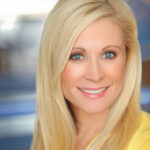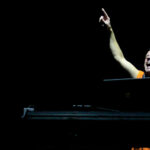Highland dancing is steeped in tradition, focusing on a set of dances that students learn to master rather than constantly pursuing new choreography. Unlike some dance forms that prioritize continuous novelty, Highland dance delves into traditional dances with histories stretching back centuries. From those just beginning their dance journey to seasoned world champions, dancers dedicate weekly practice to the same core dances. The emphasis is consistently placed on refining technique, enhancing control, and perfecting movements, all while steadily building stamina and endurance. Beyond these traditional dances, students in our studio may also explore group or solo choreographies for special performances, adding another dimension to their dance education.
While Highland dance has a strong competitive element, participation in competitions is optional at our studio. The competitive aspect centers around four key Highland dances: the Highland Fling, the Sword Dance, the Seann Triubhas, and the Reel. These four dances are indeed the cornerstone of any Highland dance championship. Beyond these core competitive dances, there are also national dances, often performed in traditional Highland or national attire. Additionally, character dances offer a more expressive outlet, incorporating themed costumes and movements. On occasion, dancers might also perform unique Highland choreographies, created by instructors and dancers for performances or scholarship opportunities, allowing for flexibility in costume choice.
The Core Highland Dances
Within the realm of Highland dances, several foundational dances form the bedrock of a dancer’s training. These include:
- Pas de Basques
- Pas de Basques and High cuts
- Highland Fling
- Sword Dance (Ghillie Callum)
- Seann Triubhas (Old Trousers)
- Hullachan
- Strathspey and Highland Reel
- Strathspey and Half Tulloch
These dances are not just steps to be learned; they are exercises in precision and artistry, each contributing to a dancer’s overall skill and understanding of the Highland dance tradition.
National Dances: Celebrating Scottish Heritage
National dances offer another facet of Highland dancing, celebrating Scottish culture and history through movement. These dances often feature graceful and flowing movements and are typically performed in specific national dress. Examples of national dances include:
- Scottish Lilt
- Flora MacDonald’s Fancy
- Wilt thou go to the barracks, Johnny?
- Highland Laddie
- Blue Bonnets
- Village Maid
- Scotch Measure
- Earl of Errol
These dances provide a broader context to Highland dancing, connecting the physical movements to the rich tapestry of Scottish heritage.
Character Dances: Adding Theatrical Flair
Character dances bring a theatrical element to Highland dancing, allowing dancers to explore different personalities and narratives through dance. These dances are often lively and expressive, with costumes and movements reflecting the character being portrayed. Popular character dances are:
- Irish Jig
- Sailor’s Hornpipe
Character dances demonstrate the versatility within Highland dancing, showcasing how the foundational techniques can be adapted to create diverse and engaging performances.
Each of these Highland Dancing Dances is composed of a selection of steps, typically around four to six per dance, offering a wealth of variation. While dancers might perform numerous different steps when sharing a stage, the underlying dances remain consistent. There is a wider repertoire of Highland dances, such as the Cakewalk and The Dusty Miller, but these are less frequently seen, mainly appearing in scholarship competitions or special performances, highlighting the depth and breadth of the Highland dancing tradition.


